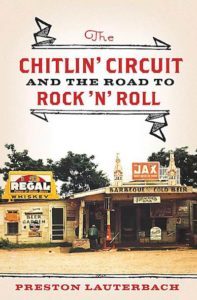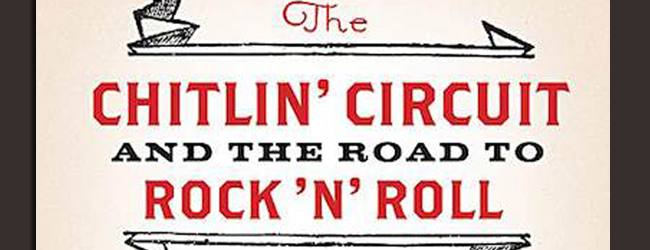
Every night, folks like Mel Waiters, Sir Charles Jones, Bobby Rush and Ms. Jody play to mostly black crowds in small Southern towns and cities. They fill nightclubs, VFW halls, and civic centers on one night stands before moving on to the next town. We call it the chitlin’ circuit. This circuit kind of seems like it’s always just been there. But before Preston Lauterbach, nobody had really explored it’s development. Lauterbach finds some very specific origins in his book The Chitlin’ Circuit and the Road to Rock and Roll.
The book is loaded with colorful characters operating on both sides of the law to create a kind of alternate black music industry. Lauterbach’s guide to this world was Sax Kari, an eighty-six year old multi-instrumentalist in 2005, who’d played nearly every role in music since the late 1920s. When Lauterbach asked him to sign a photo for him, Kari explained his signature was worth $10,000. It’s that same entrepreneurial spirit that created the chitlin’ circuit.
A kind of prototype for the circuit was created in the 1930s by bandleader Walter Barnes. Back then, everybody wanted to be Duke Ellington. But there was only one Duke: a musical genius that had captured the nation’s imagination. The theaters he was playing just couldn’t be filled by many other performers, even charging a fraction of the price. Barnes found an alternative. Southern towns wanted entertainment, and he realized he could move from town to town, filling whatever venue he could find. Barnes is remembered as something of an average musician, but he was a crowd-pleaser, and most of all he was a brilliant self-promoter. Barnes had incredible access to possibly the best national promotional vehicle for a black musician of his time: a column in the Chicago Defender, the most popular black newspaper in the county. He let people know where he was going and where he’d been. His column regularly described what he called the “stroll,” that section of town where there might be a couple clubs, cafes, and whatever else is needed for a night out. Barnes died tragically in the famous Natchez Rhythm Club fire of 1940.
The next key figure in Lauterbach’s story is Denver Ferguson, Indianapolis numbers kingpin, printer and nightclub owner. When the police in Indy started shutting down the questionable side of his business, he needed a new source of income. He began promoting and booking blues and jazz bands in the same Southern towns where Walter Barnes had played the previous decade. Lauterbach credits him as the man who truly created the chitlin’ circuit. Ferguson’s story ends with a bizarre twist when he enters into a disastrous marriage with a German woman who had advertised in Ebony magazine looking for an “American negro husband.”
Ferguson had allies around the country, men like Don Robey in Houston who ran Duke Records and the Buffalo Booking Agency. Clint Brantley made little Macon, Georgia a surprisingly important city on the black music scene. Memphis’ Sunbeam Mitchell develops particularly close relations with musicians, and helps in the transition from just booking live shows to making records. The business of booking black bands became a true business and these promoters were the power players.
Plenty of the musicians who began to play on the chitlin’ circuit in the 40s and 50s will be familiar to blues fans. Little Richard and James Brown are major players. Among others, Roy Brown, Gatemouth Brown, Lowell Fulson, Ike Turner and B.B. King all receive attention. Lauterbach’s secondary argument is that these were the men that created Rock and Roll. His description of Roy Brown emphasizes this point. There’s absolutely no doubt that the music rocked. But, in a way, this undermines Lauterbach’s other more significant argument: that chitlin’ circuit music was (and is) great on its own terms. It’s not something that should be considered of lesser status. When he starts writing about rock and roll, it seems as if the music is important because it’s the roots of something else, not just because it’s great.
There are a lot of great stories here. Lauterbach pays tribute to these men without sanitizing them. The interaction between businessmen looking for something new and musicians willing to hit the road created an important part of American culture. I’d like to see more written on the continuing development to today’s chitlin’ circuit. Lauterbach’s gotten the study off to a good start, hopefully it will continue.


